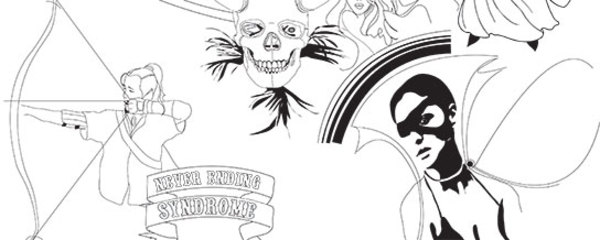Syndrome: Curing Ailing Wardrobes
I’ve spent more weekends than I’d like to admit aimlessly wandering city streets, searching for […]
Syndrome: Curing Ailing Wardrobes
I’ve spent more weekends than I’d like to admit aimlessly wandering city streets, searching for […]

I’ve spent more weekends than I’d like to admit aimlessly wandering city streets, searching for the item that will both affirm my connection to and set me apart from the masses. It’s part of the culture of the urban hunter/gatherer; it’s as significant, in its own way, as whittling fertility figurines of soapstone may have once been.
Certain brands, once discovered, can keep you forever one-upping your friends in the cool clothing department–Syndrome is one of them. Since 2001, the Chicago-based line has been making inroads in an industry dominated by the two coasts, shocking underground fashion heads with eye-catching graphics and close attention to fit and cut. The finished products subtly speak of a commitment to keeping tongue firmly in cheek, be it through smirking slogans (tees have read “I Love You In A Real Bad Way” and “Air. Help Yourself”) or color palettes chosen according to instincts rather than trend reports.
Syndrome founder Luke Cho and his right-hand man Adam Rajcevich have a full-on, vertically integrated studio set up in the River West neighborhood; they’re able to do everything from custom mixing screenprint colors to cutting and sewing garments from scratch. “It seems like we import everything these days,” says Cho, a staunch believer in doing it yourself. “I think it’s time to look for the ‘Made in the USA’ label and help our domestic economy.” To that end, Syndrome’s recent collections have used world-class Chicago designers including Creative Rescue Organization’s Ray Noland, Kelly Marie Breslin (Melk) and Cody Hudson.
Even with distribution in more than 100 stores worldwide and a women’s line on the way, Syndrome is still somewhat under the radar. But Rajcevich says he prefers a slow build to a meteoric rise: “We’ve been able to do really well [that way], whereas some brands come in real fast and die out real hard,” he explains.

